 | The town of Korčula, island of Korčula in Croatia |  |
| |
| |  General information General information | _small.gif) _small.jpg) | _small.jpg) Perched on a peninsula, vis-a-vis Pelješac, with a strategic site to control the ships on the Adriatic, Korčula is a charming strengthened city, example of Dalmatian town planning at the time of the republic of Venice. Perched on a peninsula, vis-a-vis Pelješac, with a strategic site to control the ships on the Adriatic, Korčula is a charming strengthened city, example of Dalmatian town planning at the time of the republic of Venice._small.jpg)
| _small.jpg) _small.jpg) | _small.jpg) _small.jpg) The streets of Korčula adopt a clever provision in fish-bones around a long central street; this plan, which dates from the 13th century, but still visible today, makes it possible the right streets on the west coast to let engulf the maestral, a pleasant soft wind in summer, whereas the streets of east are sinuous to prevent bura it, a particularly violent wind in winter, to infiltrate in the city. The main street crosses the city in a North-South axis. On the side of the cold winds, in the east, the streets are curved. The unit contributes to break the force of the gusts of wind and to avoid the drafts in the city. The streets of Korčula adopt a clever provision in fish-bones around a long central street; this plan, which dates from the 13th century, but still visible today, makes it possible the right streets on the west coast to let engulf the maestral, a pleasant soft wind in summer, whereas the streets of east are sinuous to prevent bura it, a particularly violent wind in winter, to infiltrate in the city. The main street crosses the city in a North-South axis. On the side of the cold winds, in the east, the streets are curved. The unit contributes to break the force of the gusts of wind and to avoid the drafts in the city.To mitigate the lack of space within the boundary of the old city, the places are small, the narrow houses, the churches and the public buildings built in height. The fortress of the city, built with stones coming from the island close to Vrnik, took its current form with 14th and 15th centuries. | _small.jpg) _small.jpg) |
|  Etymology Etymology | | Korčula was rested by the Greeks at the 4th century before J. - C., which named it Κορκυρα Μελαινα (Korkyra Melaina). The Romans gave him the Latin name of Corcyra Nigra, in French Corcyre black. Korčula is named Cùrzola in Italian. |
|
| | | | | Fortifications | _small.jpg) The first ramparts come out on the side of the sea as of that of the ground, during the construction of the city at the 13th century. Built, restored and reinforced by Venice until the 17th century, these fortifications, which one considered useless then, then ceased being maintained and were dilapidated little by little, until the municipality decides to demolish them, in second half of the 19th century. The administration of Korčula inherited and put of it at the biddings the removal of the ruins. The enclosure of the city connected the two doors to several turns of duty of which eights remained. Only the southern part of the ramparts and the eight turns were preserved. The first ramparts come out on the side of the sea as of that of the ground, during the construction of the city at the 13th century. Built, restored and reinforced by Venice until the 17th century, these fortifications, which one considered useless then, then ceased being maintained and were dilapidated little by little, until the municipality decides to demolish them, in second half of the 19th century. The administration of Korčula inherited and put of it at the biddings the removal of the ruins. The enclosure of the city connected the two doors to several turns of duty of which eights remained. Only the southern part of the ramparts and the eight turns were preserved.A tower of the city by the outside of the ramparts (13th-15th centuries) makes it possible to understand the defensive structure of it: - east coast, the wall overhangs the rocks, like formerly. The south-eastern angle is kept by the tower of All-the-Saint and its guns.
- west coast, a quay was arranged, the length which one passes successively in front of the Kanavelić tower, the door of the Sea and finally the tower of the Governor.
| 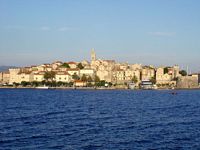 _small.jpg) 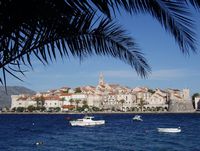 | _small.jpg) _small.jpg) | | The Gate of the Dry land | | One enters the city closed by a monumental staircase added to the 19th century, and by the southernmost door, the Dry land door, doubled of a triumphal arch baroque set up in 1650 in honor of a victorious Venetian general of the Turks. This quadrangular tower is decorated armorial bearings of Venice, blazon of the governors of Korčula, Barabaro and Loredan and of that of the doge de Venise. A commemorative plaque was affixed in 1925 for the millenium of the crowning of king Tomislav. One reaches the tower of the 13th century by a stone staircase-bridge builds well later in 1863. It replaced an older bridge. | _small.jpg) _small.jpg) _small.jpg) | _small.jpg) _small.jpg) | | The Large Tower of Ravelin (Kula veliki Revelin) | _small.jpg) On the left of the door of Be in hiding-Firm, the large tower of Ravelin (kula veliki Revelin) is leant with the southern ramparts and is regarded as the oldest part of the system of fortification and defense of the city. On the left of the door of Be in hiding-Firm, the large tower of Ravelin (kula veliki Revelin) is leant with the southern ramparts and is regarded as the oldest part of the system of fortification and defense of the city.The tower accommodates an exposure on the moreška and offers a panorama on the city and the port. Visit 9:00 at 20:30. Paying entry: 10 kunas. | _small.jpg) _small.jpg) _small.jpg) | | The Tower Zakerjan (Kula Zakerjan) | | At the end of the main street, towards north, the Zakerjan tower faces Pelješac. Besides the blazons of the governors, it carries also that of Venice. | | The Tower Kanavelić (Kula Kanavelić) | | The Kanavelić tower is semi-cylindrical and carries the blazons of the governor Barbarigo (1485-1488). | | The Gate of the Sea (Morska Vrata) | | The Tower Navy (morska vrata) presents a beautiful Austrian staircase (1907). Above the door, one finds the weapons of the governor Leoni and an inscription of 1592 reporting that after the fall of Troy, Korčula was rested by the Greek hero Anténor. | | The Large Tower of the Governor (Velika kunaseževa Kula) | _small.jpg) Built in overhang of the port and the palace of the governor, the enormous turn of the Vice-chancellor marks the south-western angle of the city. At the 15th century the soldiers who lived there were in charge of his defense. Built in overhang of the port and the palace of the governor, the enormous turn of the Vice-chancellor marks the south-western angle of the city. At the 15th century the soldiers who lived there were in charge of his defense. | | The Small Tower of the Governor (Mala kunaseževa Kula) | | The Small Tower of the Governor, built in 1483, is cylindrical. Y are carved the weapons of the Lombardo governor. | | The Tower of All Saints’ day (or of All-the-Saint) (Kula Svih Svetih) | | The Tower of All-the-Saint was built in 1493; there was at side an older square tower, which was unfortunately demolished at the 19th century. One placed three guns of the 18th century at the top of the tower. | | The Arsenal | | The arsenal was added, at the end of the 15th century, on the side external of the ramparts. The entry is surmounted armorial bearings of Venice. The space left in ruin was rebuilt at the 20th century. It shelters from now on the Korčula hotel. | | The Cathedral Saint Mark (Katedrala Svetoga Marka) | | The cathedral Saint Mark (Sveti Marko) is undoubtedly the jewel of the town of Korčula, its larger and more beautiful monument. It is at the top of the city, at the top of the hill. Two facts were at the origin of its construction: establishment of the bishopric at the 14th century and economic prosperity thanks to the craft industry of the size of the stone. It was built at the 17th century with calcareous stone of Korčula. One already on the spot used parts of old churches as well as monuments. Several generations of stonecutters and masons were harnessed with the work, which lasted a whole century (the 15th century). Y worked many artists of Korčula, but also of the Italians. Little time after the completion of the cathedral was added the votive chapel Saint Roch (1525), supposed to draw aside the epidemics of plague. The building is of Gothic style and rebirth, high on a Romance basilical level. The superbly carved gate was carried out by the Italian Master Bonino da Campione. On the two sides on high consoles lions are carved which hold a lamb in their claws. Under their legs, a man and a woman are held squatted and undoubtedly represent Adam and Eve. Its frontage with rosette is decorated of a carved plank fantastic characters: rather strange characters (for a church) decorate the cornice with the pediment, like this siren with two tails and a large head of elephant stylized… The bell-tower, stuck to the frontage, is older than the cathedral, at least its first level (Romance) dating from the 15th century. Above this first stage the dial of the clock is. Just in lower part, a small mobile metal ball, painted in black and gold, swivels according to the phases of the moon. The second stage of the bell-tower is Gothic and ends in a capped terrace of an octagonal cupola; it was built by Marko Andrijić, the most famous sculptor of the island of Korčula. | _small.jpg) _small.jpg) _small.jpg) | _small.jpg) Inside, the plan of the cathedral is with three naves. It is very irregular: the side aisles are different widths and the walls are not parallel. Inside, the plan of the cathedral is with three naves. It is very irregular: the side aisles are different widths and the walls are not parallel.The shape of the ceiling points out that of a hull of boat. On the wall in the central nave, behind the ciborium which contains the ciborium, is the baldachin of the high altar, carried out by Andrijić (1486), which shelters a table representing the patron saint of the city, holy Marc, Jerome and Barthélemy, painted by Jacopo Tintoreto, Tintoret, in 1550. It is an early work, ordered by the authorities of the island. One notices the light effects and of colors characteristic of his works, as well as the remarkably painted faces. On the line, in the southern nave, to note a diptych representing the Annunciation, allotted to Tintoret or, more probably, its workshop, and to a Virgin (13th century) known as “miraculous” since it would have helped with the victory over the Turks! The cathedral also shelters a gilded bronze statue of saint Blaise and Piéta carried out by Ivan Meštrović, a large Croatian artist of the 20th century. On the left of the chorus, to note the beautiful Gothic door of the sacristy and its reasons for musicians. Visit from May to October, 9:00 at 20:00; to address to the tourist office the remainder of the year. Paying entry: 25 kunas. | _small.jpg) _small.jpg) _small.jpg) | | The Episcopal Palace (Opatska riznica) | _small.jpg) Beside the cathedral the abbey palace, come is to replace, at the 19th century, the old episcopal palace, given up after the departure of évêché, in 1828, but whose certain elements are found in “the new” building, built in néobaroque style. Beside the cathedral the abbey palace, come is to replace, at the 19th century, the old episcopal palace, given up after the departure of évêché, in 1828, but whose certain elements are found in “the new” building, built in néobaroque style.The abbey palace shelters, on the first floor, the “abbey Treasury” which gathers rare crowned paintings, Italian paintings and drawings (15th-16th century), old manuscripts (12th century), ravissantes alabaster statuettes and one surprising collection of miniature relics. | | The Museum of the City (Gradski Muzej) | _small.jpg) Opposite the cathedral, the museum of the City occupies a very beautiful palace of the 16th century, the Gabrielis palace, one of the prettiest Renaissance palaces of Korčula, than the rich family of the same name made build. The building has two stages and of the roofs. Formerly, the ground floor was used as warehouse whereas the stages were for the use of the dwelling. The weapons of the family are represented in relief in the center of the balcony. Rebuilt several times, the museum settled there in 1957. In the museum are objects found on the island at the time of archaeological excavations and telling its story. Opposite the cathedral, the museum of the City occupies a very beautiful palace of the 16th century, the Gabrielis palace, one of the prettiest Renaissance palaces of Korčula, than the rich family of the same name made build. The building has two stages and of the roofs. Formerly, the ground floor was used as warehouse whereas the stages were for the use of the dwelling. The weapons of the family are represented in relief in the center of the balcony. Rebuilt several times, the museum settled there in 1957. In the museum are objects found on the island at the time of archaeological excavations and telling its story.The collections represent the history, the culture and the social conditions of the city and the island as a whole. However, certain times only are partially represented because the materials were not always preserved. In the first room stone fragments and a collection of monuments are exposed which tells the story of the island under the Greeks and the Romans. In the second room the art of the stone size is exposed. One can observe there a workshop of stonecutter dating from the 19th century (framings of windows, doors, the capitals, the armorial bearings, the decorative cornices and other elements coming from damaged or demolished buildings). _small.jpg) In the last room of the ground floor, a collection of kitchen utensils is presented. On the first floor are exposed the underwater discoveries, with mainly of the amphoras and the information on naval construction in the island. In the first room one can observe Greek vases dating from the 3rd century before J. - C. other objects were found in sea-beds around the island. In the last room of the ground floor, a collection of kitchen utensils is presented. On the first floor are exposed the underwater discoveries, with mainly of the amphoras and the information on naval construction in the island. In the first room one can observe Greek vases dating from the 3rd century before J. - C. other objects were found in sea-beds around the island.
Lastly, the big room of the 2nd stage, is used as gallery with a collection of art and culture. Various documents, pieces of furniture and tables illustrating the Dalmatian history are exposed in a first part of the room. In the second part, one finds furniture of living room dating from the end from 18th and beginning from the 19th century, as well as decorative objects of the same time. Under the roofs, a kitchen is arranged, with its rustic furniture, its equipment and ustensils characteristic of the area. Visit from July to August, the every day of 10:00 to 21:00; in September, 10:00 at 14:00 and 19:00 at 21:30; the remainder of the year, the every day except Sunday, of 10:00 to 14:00 Paying entry: 20 kunas. | | The Museum of Religious art | | The bishopric of Korčula was founded in 1300. Starting from the first building, rather modest, the episcopal palace gradually widened to the close houses and was transformed considerably. The most important work took place under the episcopate of Mgr. Franjo Manola (1643-1664). At this point in time was built the large balcony which has the blazon and the inscription “the bishop Franjo Manola, of Split, made set up Saint Marc in the year of grace 1654”. Starting from 1868, the palace was left with the abandonment, then demolished and rebuilt. It is a néobaroque palace today. Certain parts of the old palace were employed again in the construction industry of this new building: elements of the gate, windows, inscriptions and the large balcony. In the palace of the bishop are exposed today the treasures of the cathedral, accompanied by a rich collection of tables Renaissance, old manuscripts as well as formal dresses. | | The Church Saint Peter (Crkva Svetog Petra) | _small.jpg) North of the cathedral the small church Saint Peter is, built with the dregs. Its gate out of wooden carved at the 15th century by Bonino da Milano, a sculptor of Venice, represents the Apostles. Inside, thirteen statues baroques out of wood, of the Apostles and the evangelists. Saint Peter is on the furnace bridge. They are works of anonymous Venetian artists. Old tombstones cover the ground of the church. North of the cathedral the small church Saint Peter is, built with the dregs. Its gate out of wooden carved at the 15th century by Bonino da Milano, a sculptor of Venice, represents the Apostles. Inside, thirteen statues baroques out of wood, of the Apostles and the evangelists. Saint Peter is on the furnace bridge. They are works of anonymous Venetian artists. Old tombstones cover the ground of the church. | | The Chapel Our-Lady-of-Snows (Gospa Od Snijega) | | Inside the ramparts, on the left of the door of Be in hiding-Firm, the small votive chapel Our-Lady-of-Snows (Gospa Od Snijega) evokes the role of the miraculous Virgin in victorious resistance to a Turkish attack in 1531 (at the time, the bishops and the notable ones had run away, leaving only the inhabitants). | | The Chapel Saint Michael (Crkva Svetog Mihovila) | _small.jpg) On the right of the door of the Dry land, vis-a-vis the Town hall Rebirth, the chapel Saint Michael (Sveti Mihovil) belongs to the brotherhood of the same name. On the right of the door of the Dry land, vis-a-vis the Town hall Rebirth, the chapel Saint Michael (Sveti Mihovil) belongs to the brotherhood of the same name.The Saint Michael church posts this famous style baroque added to 17th and 18th century, just like the marble high altar and the table of Domenico Maggiotto (“Virgin of the Consolation”, 18th century). The visit of the collection of the brotherhood makes it possible to discover oldest (1615) and largest of the candles of procession (100 kg), like some beautiful icons (14th and 15th century). Visit July at mid-September, the every day of 9:00 to 13:00 and 17:30 to 23:00 Paying entry: 7 kunas. | | The Church of All-the-Saint (Svih Svetih) | | The church of All Saints’ day (Svi Sveti), dedicated to All-the-Saint, shelters also a permanent exposure of objects and documents which recall the history of the city. Opened the every day. Free entry. | | The Museum of the Icons (Zbirka ikona) | | With the south-eastern angle of the city, the lane which skirts the Saint Michael chapel led to the museum of the Icons, lodged by the brotherhood of All-the-Saint, which one can see the paddles and the candles. In addition to the icons, more the beautiful pieces are in the vault: polyptyque of Blaž Jurjev (1439) and a crucifix créto-Byzantine out of painted wooden (15th century). Founded in 1301, the brotherhood of All Saints’ day gathered and preserved in her house and the church of many objects liturgical, of the documents and objets d’art and invaluable. The room of presentation was installed and opened in 1960 with the public. In the principal room a large table out of wooden and benches, used for the solemn meals trônent. Around are laid out of the candles of ceremonies, of the white cotton tunics with a cap decorated with a small Red Cross formerly carried by the fellow-members. One finds also a cross processional silver, the medallion of the Virgin in the pain (symbol of the brotherhood), of the objects of worship of 17th and 18th centuries, the collections of song and a ballot box of vote for the election of the administration of the brotherhood. At the bottom of the room is exposed a great painting of the Holy Communion, painted on wood by an anonymous artist at the 17th century. On the right, bellow of the staircases, the oldest church of the city is located. Beside the statue of holy Lucie, one can see a good amount of ex-votos which represent it, of the eyes carved in money. It was indeed the owner of the city. Visit the every day of 10:00 to 13:00 and 17:00 to 20:00 Paying entry: 10 kunas. | | The House of Marco Polo (Kuća Marka Pola) | | While following the main street, you arrive at the house of Marco Polo, strange a small construction of late Gothic style, which spans an alley. The local legend wants that browser celebrates it is a native of the island, with for proof the frequency of this patronym with Korčula… It is in this house that it would have been born, however nothing does not prove it. The building is a ruin of the late Gothic, close which the ruins of a square tower, built on the bridge above the lane are drawn up, which is completed by a loggia-view-point. The rise with the loggia of the 1st stage offers a pretty sight on the roofs and the bell-tower of the cathedral. Visit from April to October, 9:00 at 20:30. Paying entry: 10 kunas. | _small.jpg) _small.jpg) _small.jpg) | | The Forteca Tower | | The Forteca Tower was high on a hill dominating the city, in 1815, by the English government. It offers a superb sight on the channel of Pelješac. |
|
| |  History History | 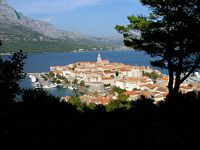 Korčula, like Dubrovnik, crossed the history. Several civilizations intersected there: Greek, Roman, illyrienne, Croatian and Venetian. Korčula, like Dubrovnik, crossed the history. Several civilizations intersected there: Greek, Roman, illyrienne, Croatian and Venetian.The city of Korčula was created well after Vela Luka, then Lumbarda, rested by the Greeks starting from the 6th century before J. - C. It did not even know the Roman occupation (as of the 1st century), of Slavic and the Croats (7th century) and the arrival of Venetian, in the year 1000. It is with the Middle Ages that the latter built the city, which lived then, as the remainder of the island, the uninterrupted waltz of the dominators succeeding the City of the Doges: Austria, France, Russia, England… Yielded to Austria by the Congress of Vienna, Korčula was integrated into Yugoslavia in 1921 and followed Dalmatia in the Republic of Croatia. Until the 17th century, all the townsmen lived inside the ramparts. It is only at the 18th century that houses were built in the south of Korčula. It is now outside the old city that are the majority of the inhabitants, as well as the stores. |
|  Characters Characters | | Marco Polo | | Like other cities of the Mediterranean basin, in particular Venice or Calvi in Corsica, Korčula affirms being the birthplace of the famous Italian browser. The house in which it would have been born is transformed into museum. What is certain, it is that the family of Sports shirt lived the island during centuries, as many documents in the archives of Korčula attest it. There is also a hotel Marko Polo, a travel agency Marko Polo, and the Jadrolinija company gave the name of the browser to his larger and more beautiful ferry. The town of Korčula even celebrated, in 1954, the 700e birthday of Marco Polo, whose supposed native house is in the vicinity immediate of the cathedral Saint Mark, on the right of bell-tower on the principal place, among the other middle-class residences of the city. Nothing is absolutely certain, but in 1995, Korčula celebrated the 700e birthday of the return of the browser of China. Only one fact is absolutely uncontested by the historians: Marco Polo took well part, in 1298, with a naval battle near Korčula, Venice opponent in Genoa, battles at the conclusion from which it was made prisoner, on September 7th, 1298. |
|  Traditions Traditions | | Brotherhoods | _small.jpg) With the Middle Ages, the laic ones belonging to the brotherhoods were charged to make penitence for their co-religionists. For this reason, they took part in all the celebrations and ravelled in procession. They also owed assistance with the most stripped and weakest. The most former brotherhood is that of All-the-Saint (1301), followed by that of Saint Roch, founded after an epidemic of plague in 1575. The brotherhood of Saint Michael (1603) is also dedicated to the Virgin. With the Middle Ages, the laic ones belonging to the brotherhoods were charged to make penitence for their co-religionists. For this reason, they took part in all the celebrations and ravelled in procession. They also owed assistance with the most stripped and weakest. The most former brotherhood is that of All-the-Saint (1301), followed by that of Saint Roch, founded after an epidemic of plague in 1575. The brotherhood of Saint Michael (1603) is also dedicated to the Virgin.During the Holy Week, the brotherhoods take part in the processions in a great enthusiasm. Most solemn place has Friday, when more than 600 people ravel in costumes. Members of the brotherhoods perpetuate there the washing of the feet of the apostles in a silver basin, where float of the white flowers. |
|
| | | | |
|
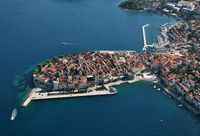
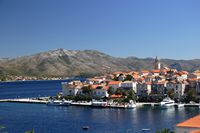
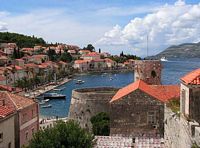
 Presentation
Presentation Situation
Situation Visits
Visits History, literature, arts, traditions, legends, religions, myths, symbols…
History, literature, arts, traditions, legends, religions, myths, symbols… Practical information
Practical information_small.gif)
_small.jpg)
_small.jpg)
_small.jpg)
_small.jpg)
_small.jpg)
_small.jpg)
_small.jpg)
_small.jpg)
_small.jpg)
_small.jpg)
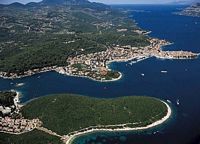
_small.jpg)
_small.jpg)

_small.jpg)

_small.jpg)
_small.jpg)
_small.jpg)
_small.jpg)
_small.jpg)
_small.jpg)
_small.jpg)
_small.jpg)
_small.jpg)
_small.jpg)
_small.jpg)
_small.jpg)
_small.jpg)
_small.jpg)
_small.jpg)
_small.jpg)
_small.jpg)
_small.jpg)
_small.jpg)
_small.jpg)
_small.jpg)
_small.jpg)
_small.jpg)
_small.jpg)
_small.jpg)
_small.jpg)
_small.jpg)

_small.jpg)